Is Aquaphor Safe For Dogs? (2025 Update)
If you are a dog owner, your pet’s health and comfort are your top priority. Like many dog owners, you probably have questions about what is and isn’t safe for your four-legged friend. Unfortunately, many perfectly healthy things for humans are toxic to dogs.
Fortunately, Aquaphor is not one of those things. Aquaphor is safe to use on your dog’s skin, and it is only mildly upsetting to them if ingested. There are many ways to use Aquaphor to treat skin conditions and improve your dog’s comfort.
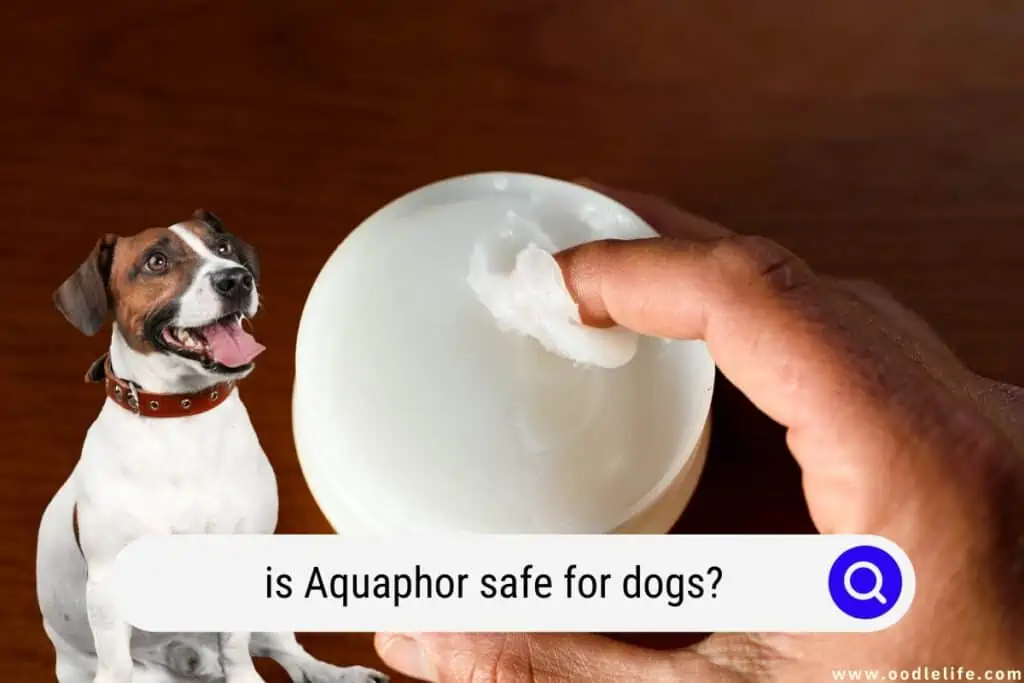
Always consult your vet before applying anything to your dog’s skin, particularly if you’ve noticed a rash, hyperkeratosis, or an injury.
What Is Aquaphor?
Aquaphor and Vaseline are two brand names for petroleum jelly. Petroleum jelly is a thick, oily substance that is smeared on the skin to aid in the healing of dry skin, cuts, burns, scrapes, and other issues.
Petroleum jelly creates a barrier on the skin to help prevent moisture loss. It is so thick and greasy that it prevents anything from going in or out. It can temporarily protect burns and minor wounds and can help relieve dry, scaly skin.
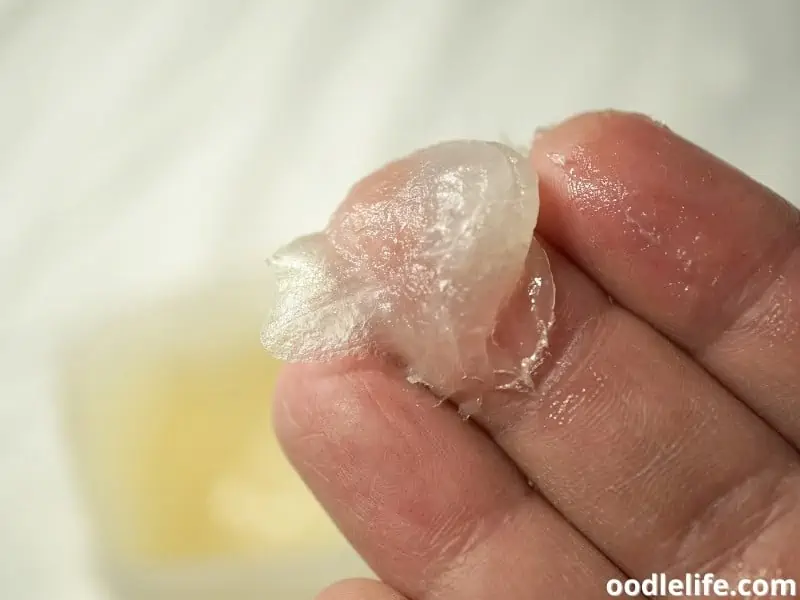
Aquaphor vs. Vaseline
While Aquaphor and Vaseline are similar, they are not identical. Vaseline’s flagship product (their original formula) contains 100% petroleum jelly. There is no water and no added ingredients like chamomile or mineral oil.
Aquaphor, on the other hand, contains only about 41% petroleum jelly. The other 59% is made up of a variety of ingredients. These include:
- Mineral oil
- Ceresin
- Lanolin alcohol
- Panthenol
- Glycerin
- Bisabolol
Some of these ingredients are humectants and moisturizers, like glycerin (a simple sugar that contains humectant properties) and mineral oil. Ceresin is a mineral wax derived from shale that the skin absorbs. Bisabolol is a soothing balm derived from chamomile, and panthenol is a moisturizer that contains vitamin B5.
These ingredients make Aquaphor more effective by itself, whereas Vaseline works best when applied over the top of another moisturizer. Vaseline alone doesn’t contain any moisturizers. The humectant ingredients in Aquaphor provide moisture, and the petroleum jelly traps that moisture next to the skin.
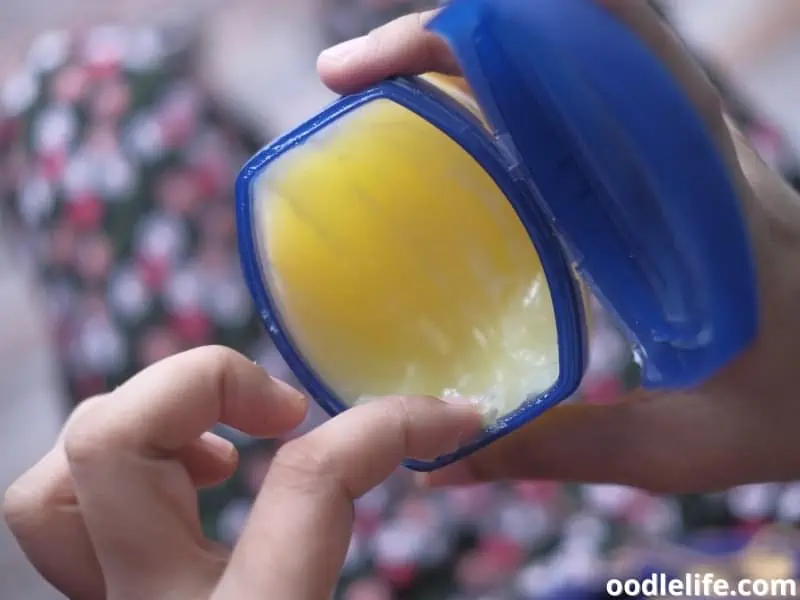
When To Avoid Aquaphor?
Although Aquaphor is safe to apply on dogs’ skin, it can cause stomach upset if ingested. Don’t be alarmed if your dog ingests a small amount of Aquaphor. You usually will not see any issues arise from this.
Problems start to occur when your dog consumes large amounts of Aquaphor. Consuming too much Aquaphor can lead to nausea, diarrhea, and other gastrointestinal upset. If you generously apply Aquaphor to your dog’s skin twice a day and they lick it all off, expect to see some stomach upset.

How To Stop Your Dog From Consuming Aquaphor?
You can prevent your dog from consuming Aquaphor by covering the affected area with a clean cloth, bandage, sock, or another barrier. You can also purchase a cone for your dog to stop them from reaching the area.
Make sure to store Aquaphor in a closed cabinet out of your dog’s reach. While Aquaphor is not toxic, consuming a substantial amount (like a whole tub) can lead to severe diarrhea and vomiting. Severe diarrhea and vomiting can cause dehydration which could be fatal.
If you suspect your dog has consumed a lot of Aquaphor, Vaseline, or another petroleum jelly product, contact your veterinarian immediately.
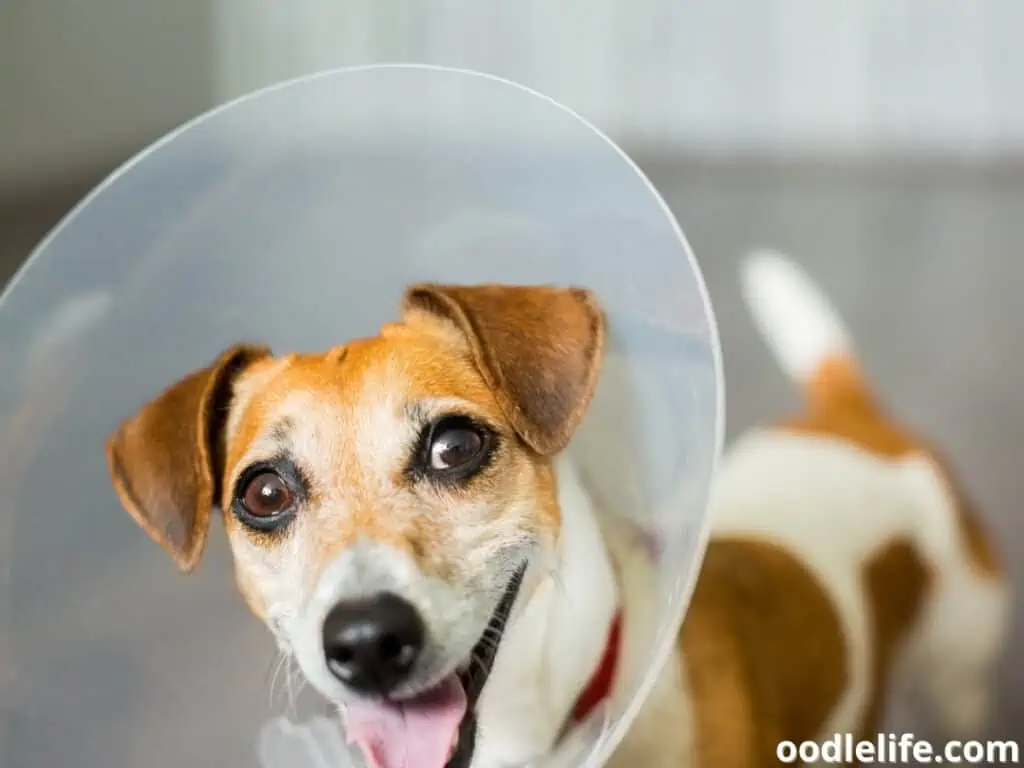
Uses for Aquaphor in Dogs
Aquaphor is useful in treating several superficial skin issues. You can apply Aquaphor to your dog’s paws, nose, rashes, or other dry or irritated areas.
Hyperkeratosis
Hyperkeratosis occurs when the outer layer of skin grows extra thick and dries out. It typically occurs in the nose or paw pads, where the skin is not covered by fur. Some breeds, including Spaniels and brachycephalic dogs like Pugs, may be more likely to get it.
Hyperkeratosis has several causes. If a dog has an uneven gait, the skin on the edges of paws that come into contact with hard surfaces less frequently can build up.
Nasal hyperkeratosis can occur if keratin on the nose does not get routinely sloughed off from contact with a food bowl. This typically happens with brachycephalic breeds.
Aquaphor alone is not sufficient to treat hyperkeratosis. However, under the direction of your veterinarian, it can be part of a holistic solution. Surgery or other in-office procedures may be necessary if the condition is severe.
After the underlying cause has been addressed and your vet has recommended a course of action, soaking the affected area in an Epsom salt bath and applying Aquaphor can aid in a speedy recovery.
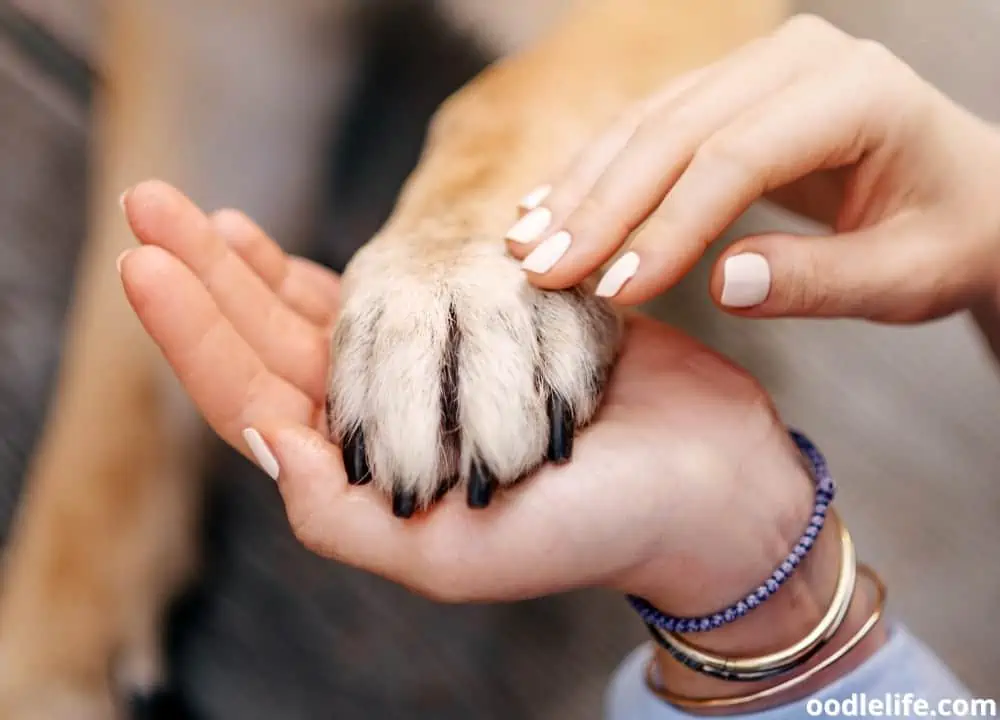
Minor Injuries
You can treat superficial cuts, scrapes, and burns with Aquaphor. However, always talk to your veterinarian before applying Aquaphor to an injury. Your dog may require stitches or other measures if the injury is severe.
Thoroughly clean and dry the wound. Apply Aquaphor and then cover with a sterile bandage or pad if possible. To prevent your dog from licking the area, put a cone around their neck or closely monitor them.
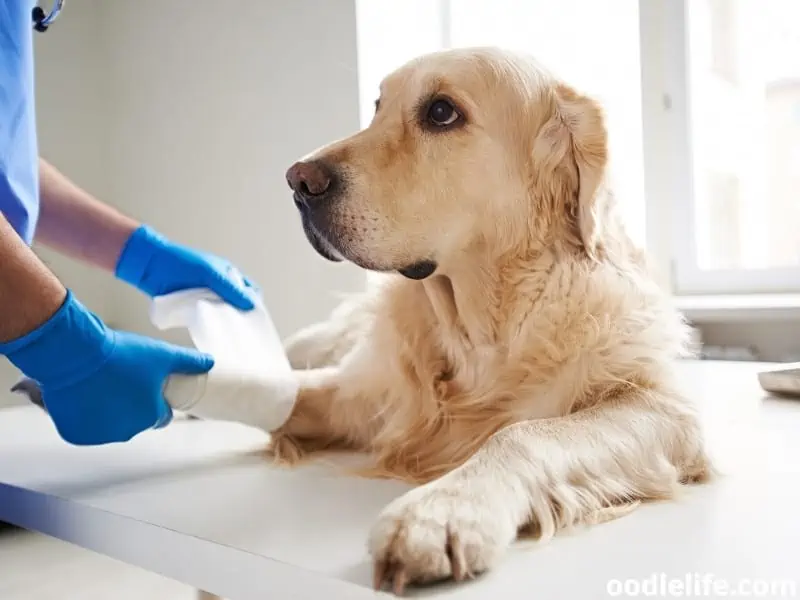
Dry, Scaly Skin
Scaly elbows are a common skin complaint of many dog owners. Dry, gray, elephant-like skin can develop on elbows, hips, ankles, and other bony, protruding areas. This usually occurs when a dog spends a lot of time lying on hard surfaces.
There is nothing dangerous about scaly skin. It’s mainly a cosmetic issue. Your dog can usually go about its life happily with dry elbows.
However, the skin can crack and become infected if it gets extremely dry.
The best way to avoid “elephant-elbows” is to minimize the time your dog spends lying on hard surfaces, particularly concrete and asphalt. Put a soft, comfortable bed or blanket down for your dog to lie on instead.
If your dog is already suffering from dry, scaly skin, Aquaphor can help soften and moisturize it. First, apply a coat over the affected areas twice a day. Then, cover the area with a clean bandage or pad to get the most benefit and allow the Aquaphor time to work.
If dry skin occurs on your dog’s nose, consult your vet. A dry nose in dogs can sometimes indicate a bigger underlying problem. It could be as simple as sunburn or as serious as an autoimmune disease.
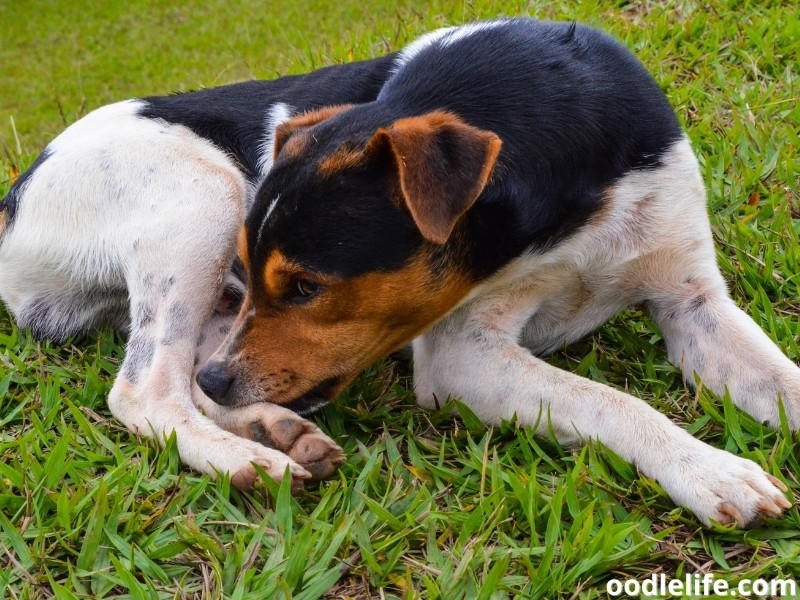
Rashes and Sores
Some dogs develop rashes from their collars, harnesses, or other things. If your dog has urinary incontinence, for example, they may have to wear a diaper. Sores and irritation can occur when dogs wear diapers for extended periods.
If your dog has developed a rash under its collar, the first thing to do is ensure that the collar is not too tight. You can also take the collar off periodically, for example, when the dog is inside at home. Similarly, ensure that harnesses are well fitted, and do not leave your dog’s harness on for extended periods.
If your dog has to wear a diaper, Aquaphor can be useful in treating and preventing diaper rash. Apply to the affected area twice a day. If possible, allow your dog to be diaper-free for a few hours daily.
Monitor your dog to make sure they don’t ingest the Aquaphor.
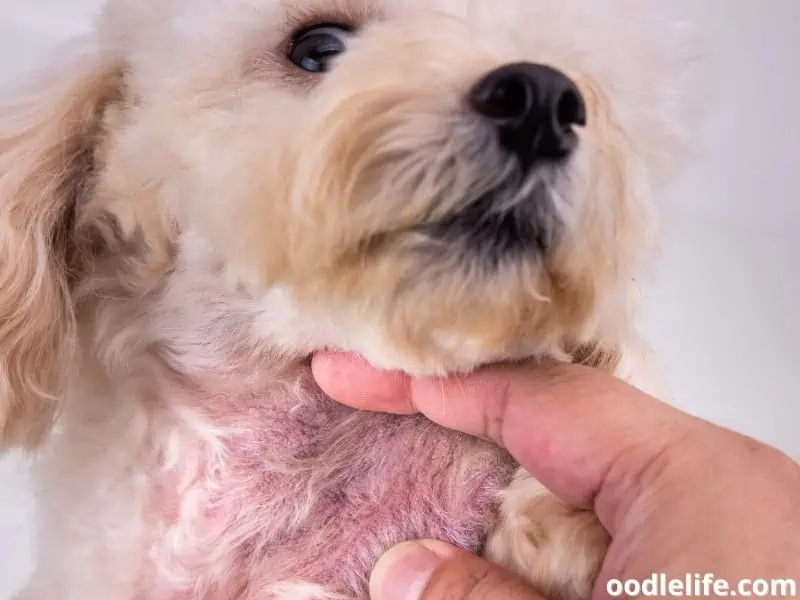
Conclusion
Aquaphor is non-toxic and safe to apply to your dog’s skin. It can help treat many conditions, from minor injuries to hyperkeratosis to dry skin to rashes. Ensure that your dog does not ingest too much Aquaphor, as it can lead to gastrointestinal problems.
Always consult your vet before applying anything to your dog’s skin, particularly if you’ve noticed a rash, hyperkeratosis, or an injury.